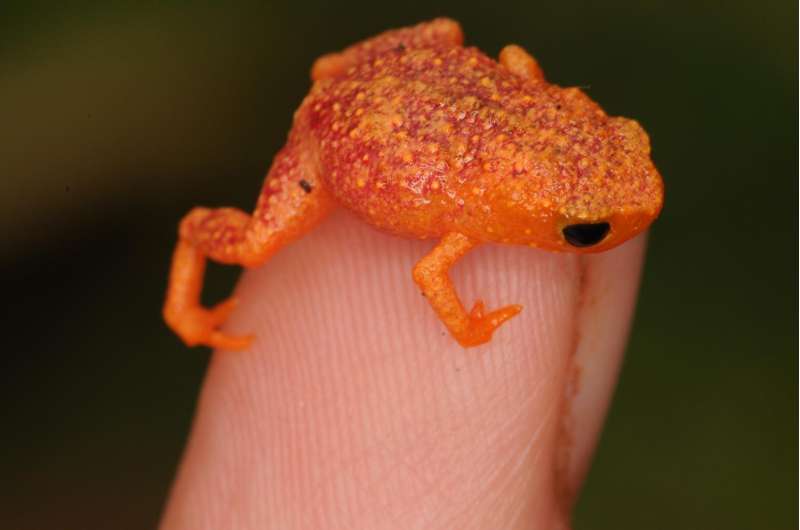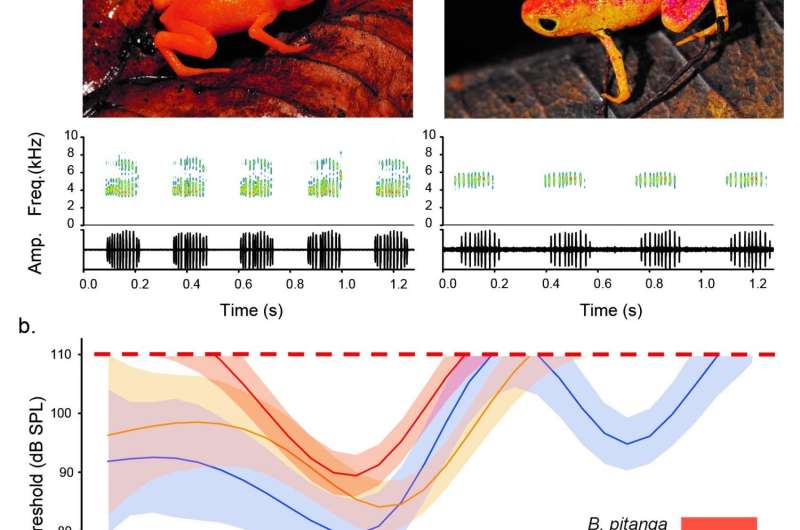Tiny Brazilian frogs are deaf to their own calls

Pumpkin toadlets, found on the leaf litter of Brazil's Atlantic forest, are among the smallest frogs in the world. An international team from Brazil, Denmark and the United Kingdom, has discovered that two species of these tiny orange frogs cannot hear the sound of their own calls. Their results are reported in Scientific Reports and represent a unique case of a communication signal persisting even after the target audience has lost the ability to detect it.
"We have never seen this before. These frogs make sounds that they cannot hear themselves," says Associate Professor Jakob Christensen-Dalsgaard of the University of Southern Denmark. The findings have been confirmed by anatomical studies at Cambridge University in the U.K., showing that the part of the ear responsible for high-frequency hearing is vestigial in these species.

Most male frogs call to signal their presence to the opposite sex and find a mate, but this is risky, since it could attract predators and parasites, and consumes energy and time.
"One would think that if a signal is not perceived by its target audience, it would be lost through evolution," says Dr. Sandra Goutte. Because these tiny frogs are brightly coloured, diurnal and known to use visual signals, the researchers hypothesize that visual communication has replaced acoustic communication.
The movement of the throat when males are calling could constitute a visual signal, in which case the call itself would represent a byproduct of the true signalling behaviour. Like many brightly coloured tropical frogs, pumpkin toadlets are highly toxic, which may lower the risk of predation when they are calling.
"The singular communication system in these pumpkin toadlets is a first example of vestigial sound communication," says Jakob Christensen-Dalsgaard. "Studying the toadlets further will advance our understanding of the mechanisms underlying the evolution of communication systems in animals."
More information: Sandra Goutte et al, Evidence of auditory insensitivity to vocalization frequencies in two frogs, Scientific Reports (2017). DOI: 10.1038/s41598-017-12145-5
Journal information: Scientific Reports
Provided by University of Southern Denmark



















